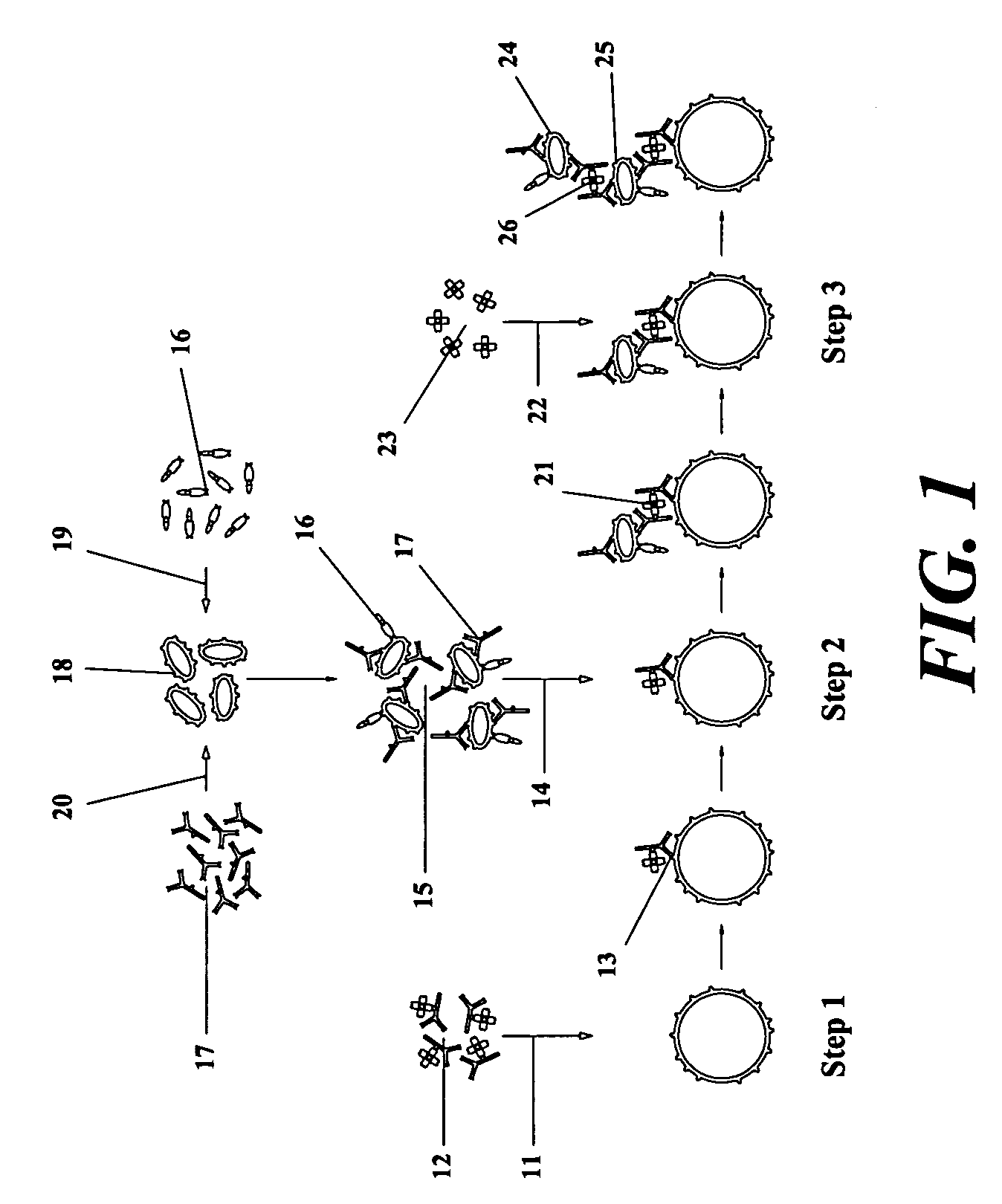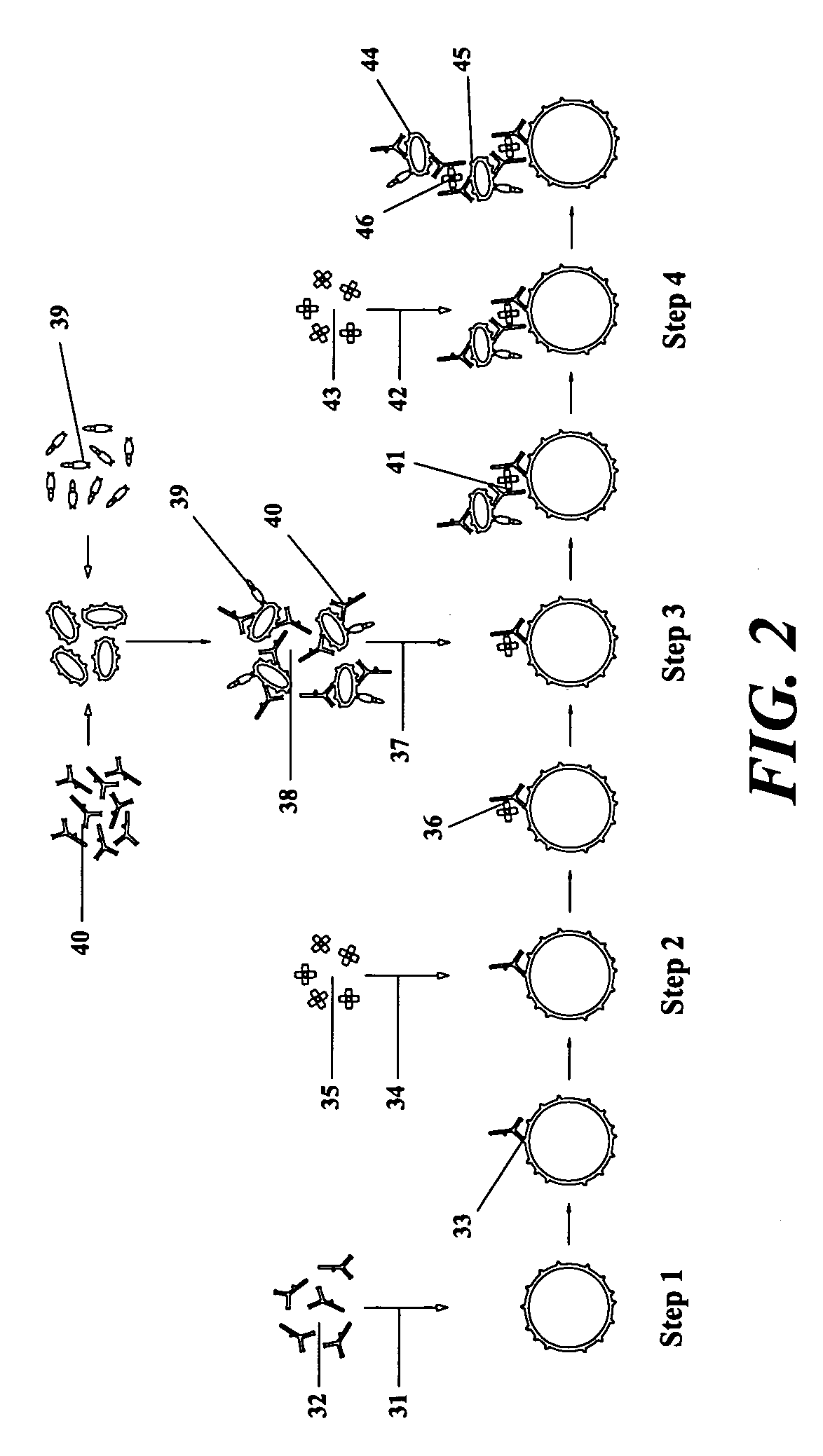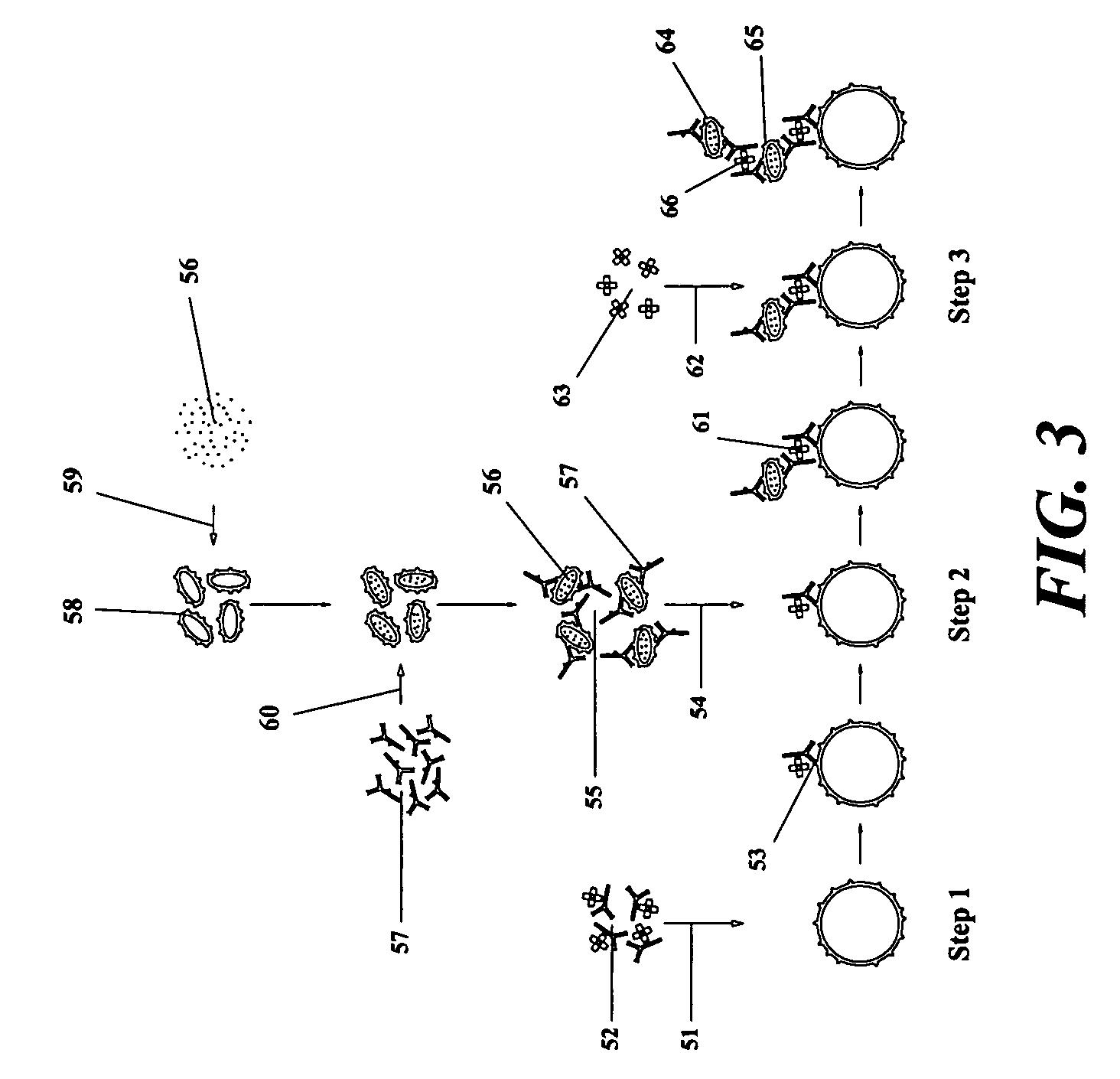Methods and means for treating solid tumors
- Summary
- Abstract
- Description
- Claims
- Application Information
AI Technical Summary
Benefits of technology
Problems solved by technology
Method used
Image
Examples
Embodiment Construction
[0043] Prior art made of record includes the inventor's earlier U.S. patent application Ser. No. 11 / 343,694, which provides a method for treating a vascularized solid tumor by targeting a plurality of, in vitro prepared, anticellular agent-carrying blood platelets to the vasculature of the tumor, to induce a thrombus formation within the tumor vasculature, and at the same time to deliver a high concentration of the anticellular agent to the tumor cells.
[0044] However, as only a portion of the used anticellular agent-carrying blood platelets will be included within the thrombus formed within the tumor vasculature, with the residual portion of the blood platelets being eventually removed from the circulation mostly by the spleen, leading to delivery of a high concentration of the used anticellular agent(s) to the spleen, which will markedly deteriorate the splenic ability to function properly afterwards, so, there exists a need for a method of treating solid tumor cancers capable of ...
PUM
| Property | Measurement | Unit |
|---|---|---|
| Concentration | aaaaa | aaaaa |
| Therapeutic | aaaaa | aaaaa |
Abstract
Description
Claims
Application Information
 Login to View More
Login to View More - R&D
- Intellectual Property
- Life Sciences
- Materials
- Tech Scout
- Unparalleled Data Quality
- Higher Quality Content
- 60% Fewer Hallucinations
Browse by: Latest US Patents, China's latest patents, Technical Efficacy Thesaurus, Application Domain, Technology Topic, Popular Technical Reports.
© 2025 PatSnap. All rights reserved.Legal|Privacy policy|Modern Slavery Act Transparency Statement|Sitemap|About US| Contact US: help@patsnap.com



